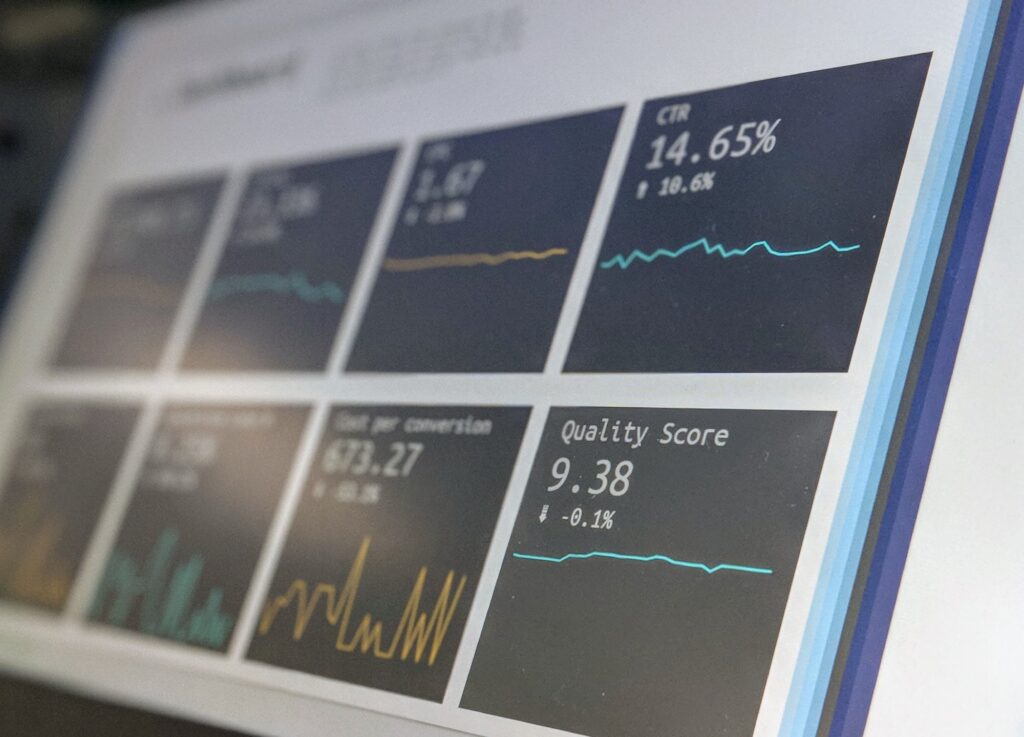No matter how detailed or robust your organization’s data governance might be, just one widely circulated outdated policy can create significant risks and adverse outcomes.
Data governance is the processes, policies, and standards an organizations uses to manage and protect its data. It ensures data integrity, security, and availability, creating a reliable framework for data usage across the enterprise. At a time when effective data governance is more crucial than ever, a policy lapse can lead to significant vulnerabilities, risking data breaches, non-compliance fines, and reputational damage.
Organizations must do everything in their power to ensure their data management practices are current and compliant with data security regulations. An automated policy management system helps streamline policy creation, updates, and enforcement, ensuring policies remain accurate, up-to-date, and aligned with evolving business needs and regulatory requirements. It supports an enterprise’s overall data protection strategy by:
- Providing real-time updates and alerts about policy changes, ensuring that all stakeholders are informed and compliant.
- Minimizing human error, which is often data protection’s weakest link.
- Facilitating regular audits and compliance checks, making it easier to demonstrate adherence to regulatory requirements.
This proactive approach to policy management fortifies an organization’s defenses against potential threats, ensuring policies are consistently updated and effectively communicated while helping it maintain data protection and safeguard one of its most valuable assets.
Manual vs. Automated Policy Management Processes
For decades, organizations have relied on manual processes to manage their internal policies, including creating, updating, and disseminating them through physical documents or email. While this method is no doubt straightforward, it often leads to several challenges:
- Manual processes are time-consuming, prone to human error, and lack consistency.
- Keeping track of policy versions and ensuring that all employees have the latest updates, and maintaining compliance can become overwhelming.
- Manual systems can create bottlenecks, delaying policy implementation and response times in the event of a compliance audit or data breach.
Automated policy management simplifies these tasks through centralized digital platforms that address manual challenges, facilitating real-time updates, consistent policy application, and reduced human error risk. Advanced software can track changes, manage approvals, and ensure the most current policies are always accessible to relevant personnel, enhancing efficiency and improving accuracy and accountability.
The shift from manual to automated policy management represents a significant advancement in organizational capability. Automated systems can rapidly adapt to regulatory changes, ensuring continuous compliance and reducing administrative burdens. By eliminating the inefficiencies of manual processes, organizations mitigate risks associated with outdated or inconsistent policies and strengthen their overall data protection strategy.
Maximum Data Protection: Benefits of Automated Policy Management
Modern regulatory demands require businesses to contend with increasingly extensive volumes of data and policies. Manual management of these assets is time-consuming, error-prone, and often inadequate. Automated policy management is a transformative solution that provides organizations with the tools they need to manage their data efficiently while mitigating risks.
By leveraging advanced technologies like AI and Gen-AI to enhance data security, enterprises can achieve unprecedented levels of data protection and compliance while enjoying increased operational efficiency.
Reclaim Your Time
One of automated policy management’s most immediate benefits is how it allows your organization to claim back valuable time. Manual policy management is often a labor-intensive process that requires constant attention to detail, eating up precious work hours and energy that could be better spent on more strategic tasks. By automating processes like routine policy updates and dissemination, organizations can free up staff to focus on higher-value initiatives.
Policy management software revolutionizes how organizations handle policies, automating routine activities and centralizing policy information. It can dramatically reduce traditional administrative workloads associated with policy management, saving time and other resources while ensuring policies are consistently applied.
Improve Policy Effectiveness with AI
Another standout feature of an automated policy management system is its ability to enhance policy effectiveness. AI and GenAI use advanced algorithms to analyze vast amounts of data to provide insights and recommendations for policy creation and updates, ensuring policies are not only compliant but also optimized for your organization’s unique needs and challenges.
AI-generated recommendations help improve the policy creation process as well. By analyzing historical data and current trends, AI can suggest policy changes that align with best practices and regulatory requirements, helping your organization create more effective policies that are tailored to its specific operational environment.
Automated policy management systems also help ensure policies align with business and security goals. They continuously monitor and update policies based on the latest data and regulatory changes, helping to maintain a strong security posture and supporting various business objectives. This alignment is critical to integrating internal data protection efforts with your business’s overall strategic direction.
Automated policy management in cloud environments offers a robust solution for enhancing data protection and ensuring compliance. Your organization can achieve maximum data protection and workflow efficiency by reclaiming time, reducing manual workloads, streamlining updates, facilitating audits, and leveraging AI for optimized policy creation.
Streamline Policy Updates
Keeping policies up-to-date is critical for maintaining compliance and protecting data. Automated policy management systems streamline policy updating processes by providing real-time notifications and making the latest versions easily accessible to all relevant stakeholders. This ensures everyone in the organization operates under the most current guidelines, reducing the risk of non-compliance and data breaches.
Efficient Policy Audits and Compliance
An automated policy management system facilitates efficient audits and compliance checks. Its centralized repository of policies and tracking of all changes and approvals make it easier to demonstrate regulatory compliance while simplifying the audit process and ensuring your organization can quickly respond to any compliance inquiries or investigations.
Safeguard Your Data with Proactive Protection
Maintaining data integrity ensures your data remains trustworthy and reliable. An automated policy management system helps ensure data integrity by enforcing policies that govern how your organization handles, stores, and processes data. Automating these processes minimizes data corruption and unauthorized access risk and allows you to create a comprehensive audit trail of all policy changes and data interactions, a crucial tool for proving compliance and facilitating in-depth analyses.
Along with preventing data breaches and ensuring data integrity, automated policy management supports continuous compliance. Regulations and standards are constantly evolving, and keeping up with these changes manually can be challenging. An automated system instantly updates policies to reflect new regulatory requirements, ensuring your organization remains compliant without the need for constant manual intervention.
By implementing proactive protection through automated policy management, your enterprise can safeguard its data against breaches and integrity issues while maintaining compliance and enhancing its overall security posture. It also provides peace of mind, knowing your data is protected by a robust, automated system designed to adapt and respond to new data security challenges.
How Automation Improves Efficiency and Reduces Risk
Data governance and data privacy requirements are often deeply interconnected, yet it’s not uncommon for the teams in charge of them to operate in isolation from one another. This disconnect can lead to significant gaps in policy development, implementation, and enforcement, ultimately compromising the organization’s overall security posture. To bridge these gaps and enhance efficiency, organizations are turning to automated security policy management systems.
Automated security policy management helps data governance and privacy teams work collaboratively, ensuring all policies are consistently applied and reflect the latest regulatory guidance. This unified approach eliminates silos and enables a single source of truth, reducing the risk of critical errors and enhancing overall data protection.
Investing in software that supports automated security policy management offers substantial benefits. Organizations can improve efficiency by reducing manual tasks and ensuring policies are always current and consistently enforced. This leads to better data protection, as automated systems can promptly address any deviations from established protocols. Furthermore, by unifying data governance and privacy under one automated system, organizations can enhance cross-functional collaboration, leading to more cohesive and effective policy management.
Data Security Automation: Aligning Policies and Security Strategies
While regulation remains a top driver for data protection programs, the lines between privacy, security, and data governance are increasingly blurring, with organizations inserting governance more strategically into their data lifecycles. It’s no surprise that this shift brings its own set of challenges, including the ability to easily discover, understand, and protect data.
Automated policy management software allows teams to create a central data inventory that simplifies system integration and data discovery and classification. This allows them to manage broader security program aspects, such as access requests, incident management, and privacy impact assessments, among other things.
Key components of an automated policy management system include:
- Automated Data Mapping. Automated data mapping systematically tracks and catalogs data across the organization, ensuring all data is accurately identified and managed.
- Data Protection and Privacy Impact Assessments (DPIAs & PIAs). DPIAs and PIAs automate the evaluation of data processing activities to identify and mitigate privacy risks proactively.
- Privacy Policy and Audits Management. Privacy policy and audits management automates the creation, dissemination, and auditing of privacy policies to ensure ongoing compliance and accountability.
Automated policy management is a strategic investment that enhances efficiency and reduces risk. It helps organizations ensure consistent enforcement, improve compliance, and protect their data more effectively. The ROI of this approach is evident in the time saved, the reduction of errors, and the enhanced ability to adapt to regulatory changes swiftly, making it a vital component of a robust data protection strategy.
AI-powered Velotix takes a cybernetic approach to policy management, formulating a detailed, dynamic understanding of your data environment. It intelligently tracks exceptions to the rule, builds and updates policies, and continuously analyzes data flows to identify potential vulnerabilities. The system adapts in real time to emerging threats and regulatory changes, enabling your organization to comply with current regulations and anticipate and prepare for future compliance requirements. It also enhances cross-functional collaboration by providing a unified platform where data governance and privacy teams can work together seamlessly, ensuring policies are consistently applied across all departments.
Velotix’s patented technology uses advanced algorithms to recommend policy adjustments based on historical data and predictive analytics, ensuring your organization’s policies are not only compliant but also strategically aligned with business objectives. This intelligent approach reduces the manual workload on staff, allowing them to focus on strategic initiatives that drive growth and innovation.
By leveraging AI and automation, Velotix provides a comprehensive, intelligent solution for modern data protection challenges. It offers improved efficiency, reduced risk, and a significant return on investment, making it an indispensable tool for any organization aiming to safeguard its data and maintain robust compliance in an ever-evolving regulatory landscape.
Ready to learn more about how Velotix can bring efficiency and accuracy to your organization’s policy management? Contact us today to learn more or book a demo that walks you through the software’s various features and benefits, allowing you to see firsthand how it can transform your data protection strategy.

